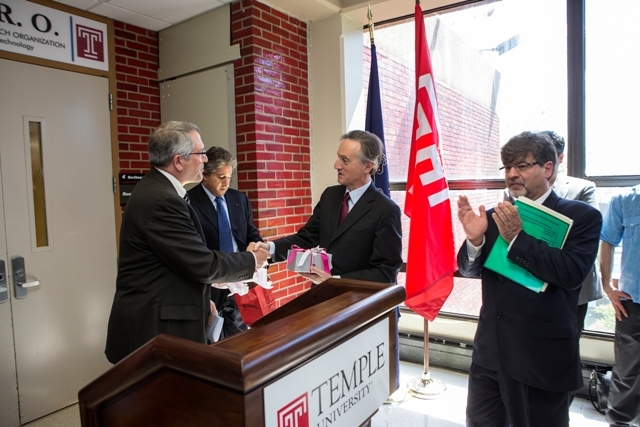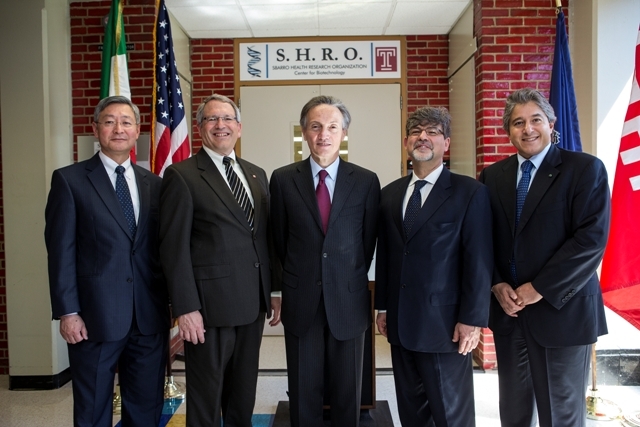Ambassador’s visit highlights Temple’s connections to Italy
To highlight the connections and collaborations between Temple University and Italy, Italian Ambassador to the United States Claudio Bisogniero visited Temple's Main Campus and the Sbarro Institute for Cancer Research and Molecular Medicine last Friday.
Bisogniero met with President Neil Theobald, Provost Hai-Lung Dai and Sbarro Director Antonio Giordano. He also spoke to some 50 faculty, staff and students — many with connections to Italy — and toured some of the state-of-the-art labs at the Sbarro Institute on the fourth floor of the Bio-Life Sciences Building.
“It’s a great honor to be here at Temple University,” said Bisogniero. “I am fully aware of the high quality that (Temple and the Sbarro Institute) represent. I think that the collaboration between Temple, the Sbarro Institute and Italy is really outstanding and deserves every praise.”
The ambassador’s visit was part of the celebration of 2013 as the year of Italian culture in the United States.
“Frankly, when you talk about Italian culture, it is a notion that goes well beyond the traditional notion of Italian culture that we are all familiar with, ranging from painting to sculpture to opera and music,” he said. “I think it is a notion that is much wider; the notion of culture for a nation also has to do, obviously, with the language, but also (includes) everything that has to do with innovation and creativity and design and research and technology.”
In welcoming Bisogniero, President Theobald said the ambassador’s visit to Temple provides an opportunity to celebrate the many shared interests between the United States and Italy and to build on the warm friendships between the two countries.
“Temple University is proud to contribute to that friendship, and we value the longstanding commitments and connections that we have there,” he said.
Theobald noted that Temple’s oldest continuous international campus is located in Rome, and that more than 500 students travel there each year to study art, architecture, international business and law, literature, history and the Italian language. He said Temple has also more recently developed partnerships with the universities of Rome, Milan and Siena.
Theobald said Temple is especially proud of its bond with the Sbarro Health Research Organization (SHRO), which funds the Sbarro Institute at Temple and allows for important research collaborations between scientists at Temple and in Italy in areas such as cancer, vascular disease, and diabetes.
“It is very important for us to work in these interdisciplinary areas and work internationally in collaborations so that becomes the norm,” he said.
A native of Naples, Italy, Giordano founded the internationally recognized SHRO and the Sbarro Institute when he first came to Temple’s Fels Cancer Institute in 1993. After a brief period at Thomas Jefferson University, he moved Sbarro back to Temple’s College of Science and Technology in 2002.
“We are really proud that Ambassador Bisogniero has chosen to visit our organization and our university,” said Giordano, who is also director of Temple’s Center for Biotechnology. “Our partnership with Temple has been critical in the growth of the Sbarro organization and led us to build a premier program in cancer research in the United States.”
Giordano noted that in the past 20 years he has trained more than 400 Italian scientists at Sbarro, most of them at Temple.
“The message I would like to send, with the help of Dr. Bisogniero, is to bring to the attention of Italy and the Italian community around the world the successful program we have here at Temple and the important links we have with Italy.”

